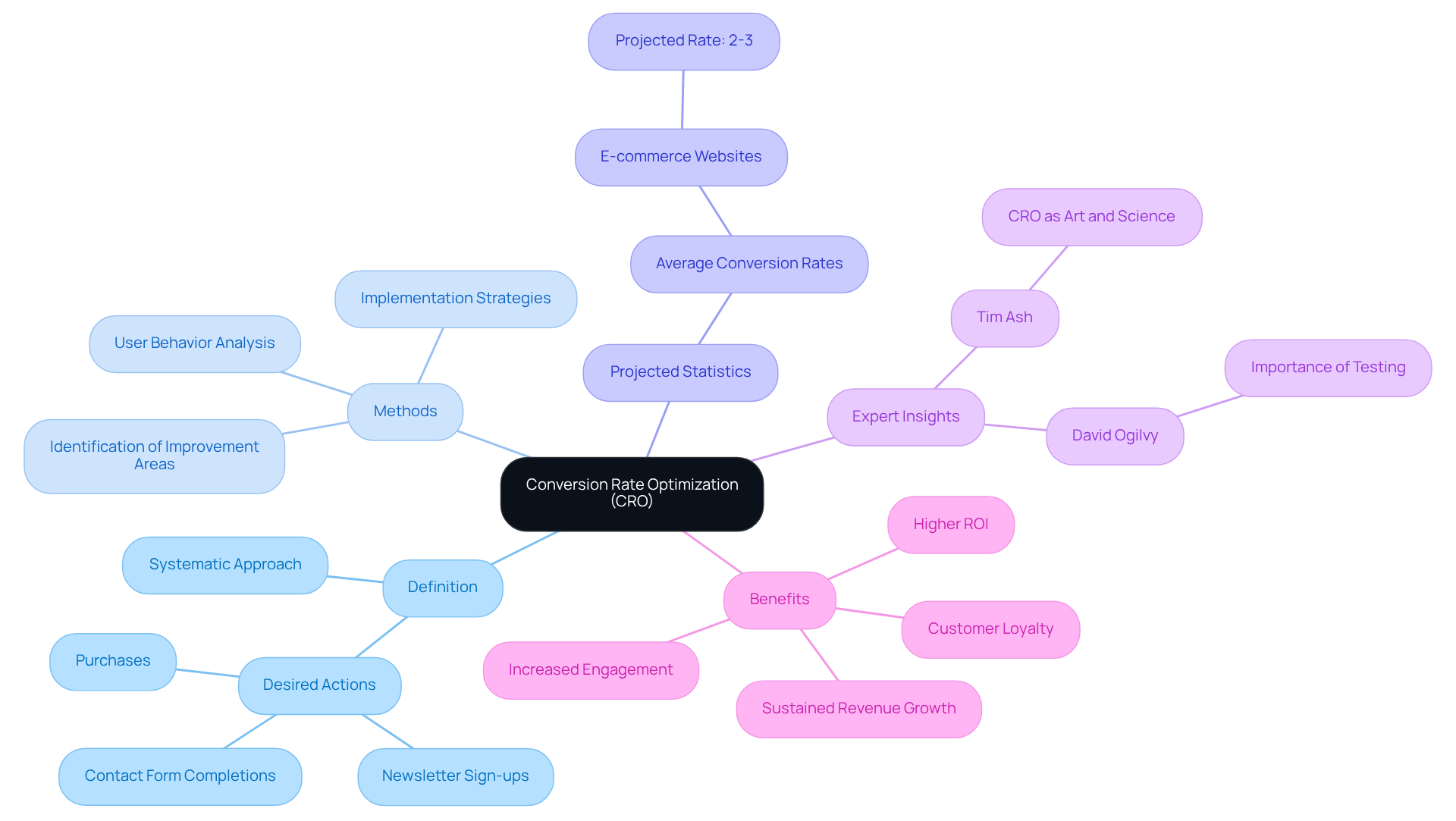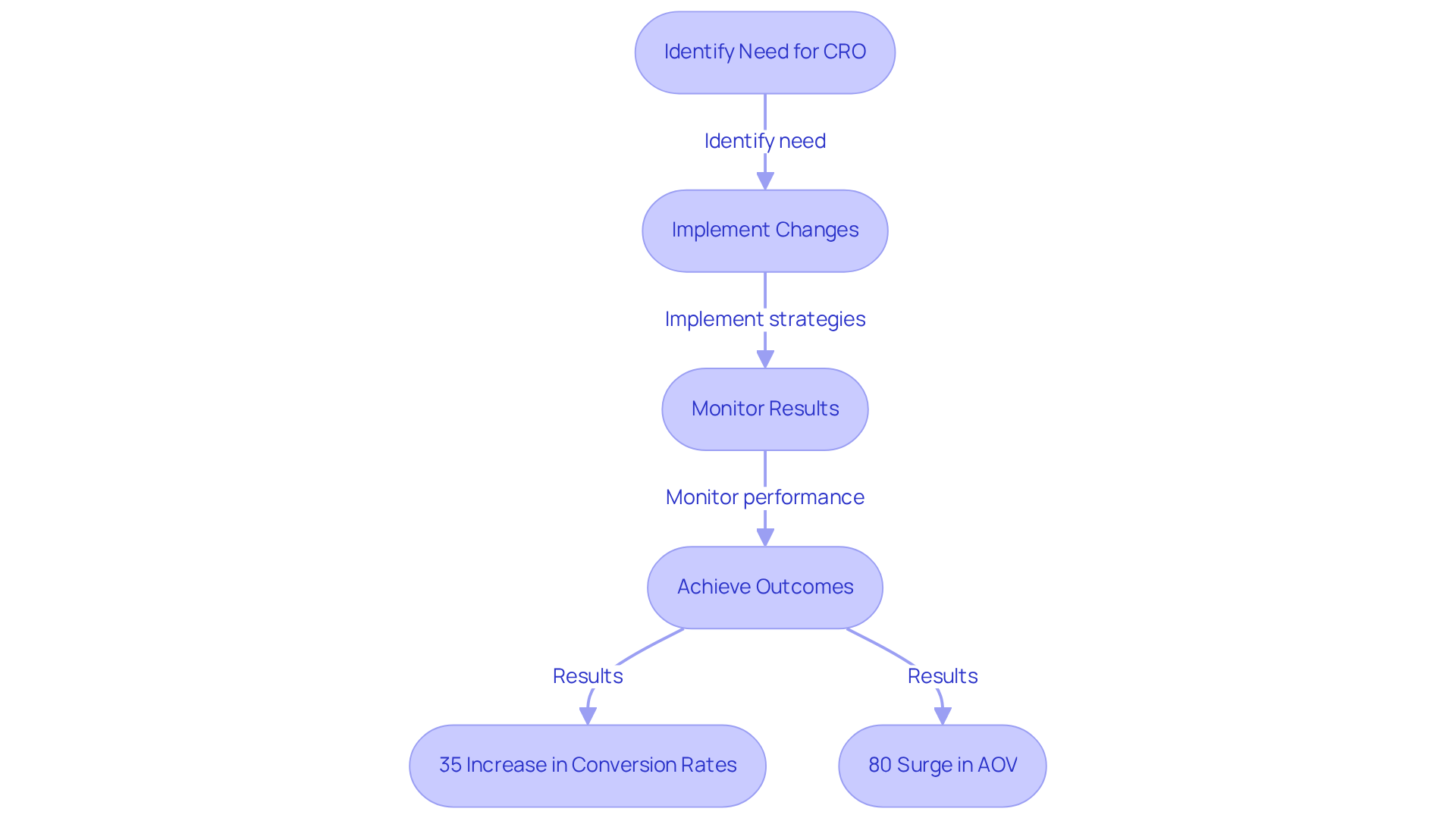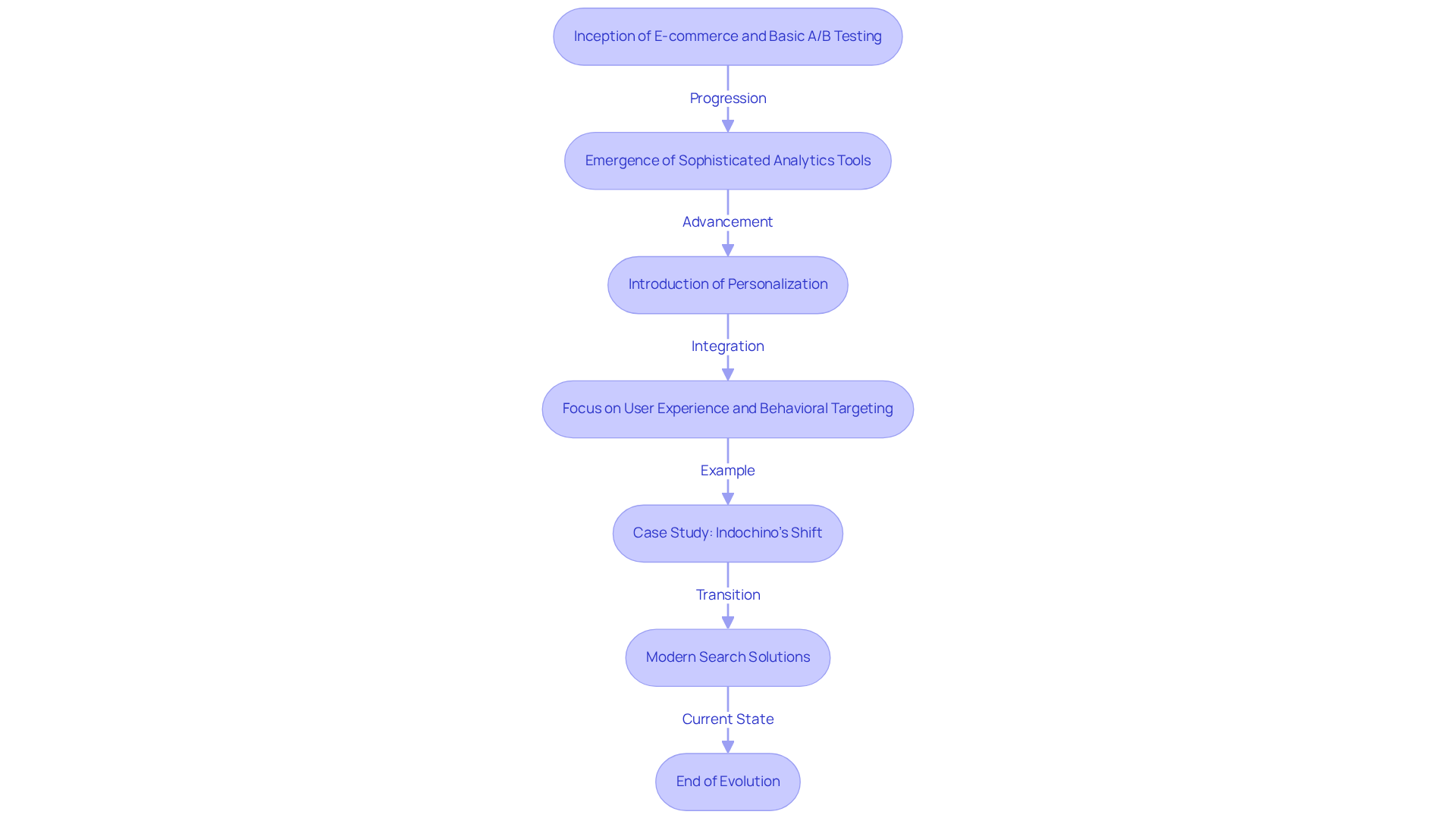
Overview
Conversion Rate Optimization (CRO) is defined as a systematic approach aimed at increasing the percentage of website visitors who perform desired actions, such as making purchases or signing up for newsletters.
Effective CRO strategies are essential for Direct-to-Consumer (DTC) brands, as they enhance profitability and customer loyalty without the necessity of increasing traffic. This is evidenced by case studies demonstrating significant improvements in conversion rates.
Strategies such as:
- User research
- A/B testing
- Data analysis
are critical components of effective CRO. By focusing on these elements, brands can achieve substantial growth in their conversion rates.
Introduction
Understanding the intricacies of conversion rate optimization (CRO) is essential for direct-to-consumer (DTC) brands striving to excel in a competitive digital landscape. This article explores the definition of CRO, emphasizing its critical role in transforming website visitors into loyal customers through strategic enhancements. As businesses face escalating customer acquisition costs and the imperative for improved profitability, the pressing question emerges: how can brands effectively leverage CRO to maximize their existing traffic and drive sustainable growth?
Define Conversion Rate Optimization (CRO)
The conversion rate optimisation definition encompasses a systematic approach to increasing the percentage of website visitors who undertake desired actions, including making a purchase, signing up for a newsletter, or completing a contact form. This process entails a thorough examination of user behavior, identification of improvement areas, and the implementation of strategic plans aimed at enhancing the overall user experience. By optimizing various elements of a website, businesses can effectively convert a greater number of visitors into customers without the need to increase traffic, thereby maximizing their return on investment (ROI) from existing visitors.
As we look to 2025, the conversion rate optimisation definition suggests that average conversion rates for e-commerce websites are projected to hover around 2-3%, underscoring the critical necessity for effective CRO strategies. Tim Ash encapsulates CRO as "the once they arrive on your website," thereby emphasizing its pivotal role in driving engagement. Industry specialists assert that a well-executed CRO process not only enhances engagement but also cultivates customer loyalty, ultimately propelling sustained revenue growth. Real-world examples further illustrate the power of CRO; companies that have adopted comprehensive CRO programs report conversion rate increases of up to 36%, showcasing the tangible benefits derived from optimizing user interactions.
David Ogilvy's insight that "never stop testing, and your advertising will never stop improving" reinforces the necessity of continuous testing and learning within the CRO framework. By prioritizing conversion rate optimisation definition, businesses can realize substantial enhancements in their bottom line without the requirement of increasing traffic, establishing it as an essential component of any robust digital marketing strategy.

Contextualize CRO in Digital Marketing
In the realm of digital marketing, the conversion rate optimisation definition is a pivotal element that directly influences an organization's capacity to meet its business objectives. As customer acquisition costs escalate and competition intensifies, DTC companies must prioritize the optimization of their existing traffic to enhance profitability.
For example, a $30M apparel company collaborated with Parah Group to redesign its homepage, emphasize social proof, and refine product pricing, culminating in a remarkable 35% increase in conversion rates and a 10% uplift in revenue per visitor. Likewise, Grab Green, a $15M cleaning product enterprise, experienced an 80% surge in average order value (AOV) following the implementation of strategic pricing tests and bundling options.
These case studies underscore how the conversion rate optimisation definition synergizes with other marketing initiatives, such as (SEO) and paid advertising, by ensuring that the traffic generated through these channels converts effectively. By harnessing data analytics tools and insights into consumer psychology, companies can craft tailored experiences that resonate with their audience, ultimately driving higher conversion rates and increased revenue.
Parah Group's innovative approaches not only yield immediate results but also foster sustainable growth for DTC brands, highlighting the critical importance of the conversion rate optimisation definition in a comprehensive digital marketing strategy.

Trace the Evolution of Conversion Rate Optimization
The conversion rate optimisation definition has seen a remarkable transformation since the inception of e-commerce. Initially, CRO was largely centered around basic A/B testing, where marketers experimented with simple variations of web pages to determine which versions yielded better performance. However, as technology progressed, so did the methodologies utilized in the conversion rate optimisation definition. The arrival of sophisticated analytics tools has enabled marketers to explore behavior more thoroughly, facilitating more informed, data-driven decision-making.
Today, the definition of includes a diverse array of strategies that extend beyond mere testing. Personalization has emerged as a critical component, with 71% of consumers now expecting tailored experiences that resonate with their individual preferences. Additionally, user experience (UX) design and behavioral targeting have become integral to the conversion rate optimisation definition, reflecting a more holistic approach to marketing.
This evolution is further exemplified by case studies such as Indochino's shift from traditional landing pages to editorial-style content, which resulted in over 800 new showroom bookings and significant engagement. Similarly, the implementation of modern search solutions has shown that 43% of online shop visitors utilize the search function immediately, indicating a substantial opportunity for optimization.
As the landscape of e-commerce continues to evolve, the importance of adapting to consumer expectations and leveraging cutting-edge technology cannot be overstated. The ongoing advancements in conversion rate optimisation definition methodologies not only enhance the effectiveness of marketing efforts but also promote sustainable growth for brands navigating an increasingly competitive market.

Identify Key Components of Effective CRO Strategies
Effective Conversion Rate Optimization (CRO) strategies encompass several critical components that drive success:
- User Research: This foundational step involves understanding the target audience through surveys, interviews, and analytics to pinpoint pain points and motivations.
- A/B Testing: Systematic testing of different versions of web pages or elements is essential to determine which variations yield superior conversion rates.
- User Experience (UX) Design: Crafting intuitive and user-friendly interfaces is vital for facilitating easy navigation and enhancing the overall user experience.
- Compelling Copywriting: The creation of persuasive and engaging content resonates with the audience and effectively encourages them to take action.
- Data Analysis: Ongoing monitoring and analysis of performance metrics are crucial for identifying trends and areas ripe for improvement.
By integrating these components into their strategies based on the conversion rate optimisation definition, DTC brands can establish a more effective and efficient conversion process, ultimately leading to increased sales and enhanced customer loyalty.

Conclusion
Understanding the definition of conversion rate optimisation (CRO) is vital for direct-to-consumer (DTC) brands striving to enhance their online performance. By systematically increasing the percentage of visitors who undertake desired actions on a website, businesses can maximize their return on investment without necessitating additional traffic. This strategic approach not only fosters customer engagement but also cultivates loyalty, ultimately driving revenue growth.
The significance of effective CRO strategies in the digital marketing landscape cannot be overstated. Key components, including:
- user research
- A/B testing
- user experience design
- compelling copywriting
- data analysis
play pivotal roles in shaping successful conversion processes. Real-world examples illustrate the tangible benefits of implementing comprehensive CRO programs, with brands reporting substantial increases in conversion rates and revenue.
As the e-commerce landscape continues to evolve, embracing the principles of conversion rate optimisation is increasingly essential. DTC brands are urged to adopt a proactive approach to optimizing their existing traffic, leveraging data-driven insights to craft tailored experiences that resonate with their audience. By prioritizing CRO, companies can not only enhance their immediate performance but also establish a foundation for sustainable growth in a competitive market.
Frequently Asked Questions
What is Conversion Rate Optimization (CRO)?
Conversion Rate Optimization (CRO) is a systematic approach aimed at increasing the percentage of website visitors who take desired actions, such as making a purchase or signing up for a newsletter. It involves analyzing user behavior, identifying areas for improvement, and implementing strategies to enhance the overall user experience.
Why is CRO important for businesses?
CRO is important because it allows businesses to convert more visitors into customers without needing to increase traffic. This maximizes the return on investment (ROI) from existing visitors and can lead to significant revenue growth.
What are the projected average conversion rates for e-commerce websites by 2025?
The projected average conversion rates for e-commerce websites by 2025 are expected to be around 2-3%.
How can effective CRO strategies impact customer engagement and loyalty?
Effective CRO strategies enhance engagement and cultivate customer loyalty, which can lead to sustained revenue growth.
What tangible benefits have companies experienced from implementing CRO programs?
Companies that have adopted comprehensive CRO programs have reported conversion rate increases of up to 36%, demonstrating the significant benefits of optimizing user interactions.
What does Tim Ash mean by describing CRO as "the art and science of getting individuals to act"?
Tim Ash’s description emphasizes the importance of understanding user behavior and creating effective strategies that encourage visitors to take action once they arrive on a website.
What role does continuous testing play in CRO?
Continuous testing is essential in the CRO framework, as it allows businesses to continually improve their advertising and conversion strategies, ensuring ongoing enhancements in performance.
How does CRO contribute to a digital marketing strategy?
CRO is a crucial component of a robust digital marketing strategy, as it focuses on optimizing user interactions to improve conversion rates and overall business performance without the need for increased traffic.
FAQs











